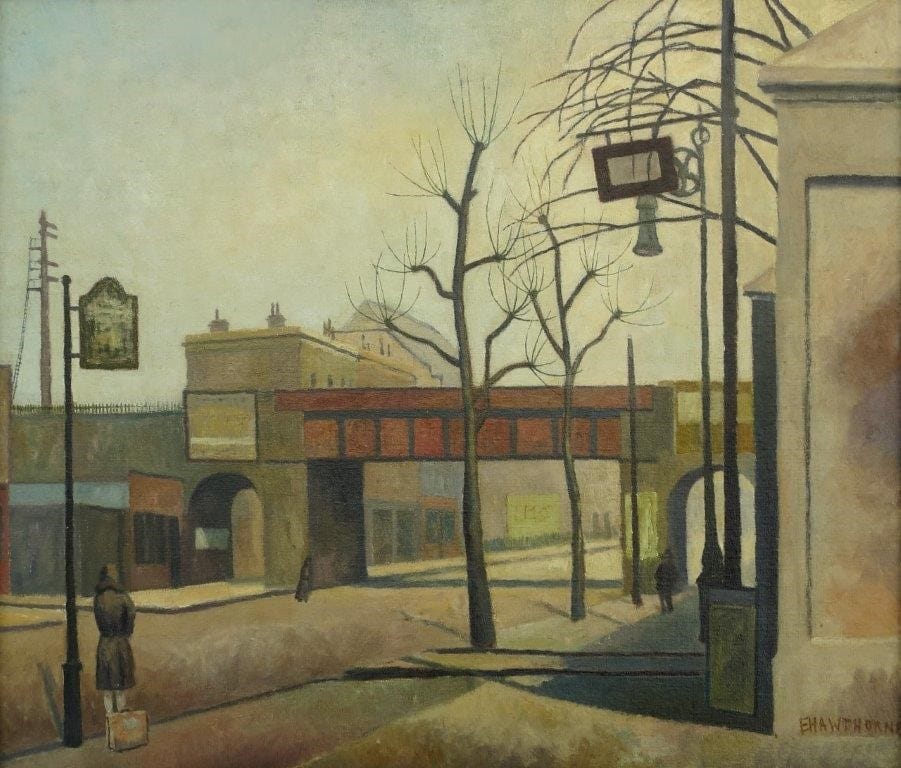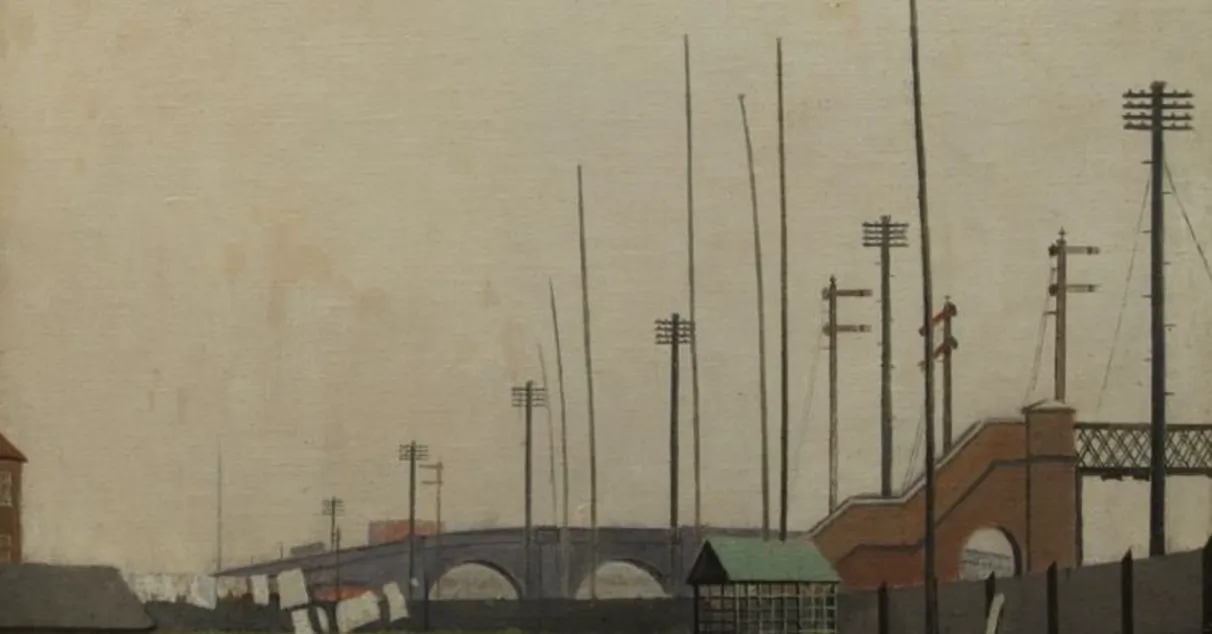In today's main story, David McAllister goes looking for the artists of the East London Group and the London they portrayed
A common London experience: you are on a bus going through an area you’ve seen countless times before. Suddenly, you notice something new: construction site hoardings or a gaping hole where a large building once stood. You think about it for a while, but you cannot, for the life of you, remember what the building looked like the last time you were here.
The transience of city life can be peculiar. Even if change is a given in a place like London — even if it happens before our eyes — it’s hard to figure out exactly what has changed. That’s why art that takes the city as its principal subject has a special purpose: to provide evidence not only of a particular place at a particular time, but also of what it means for the people who exist there.

To my mind, there are few artists who have achieved this goal so conclusively over the last century as the East London Group. Their work is currently on display in the exhibition In the footsteps of the East London Group, at Bow Arts’ Nunnery Gallery, alongside responses by contemporary artists.
Mostly active between the world wars, the East London Group’s members took art classes at various working men’s institutes around Bethnal Green; by and large, they were “moonlight” artists who fitted their painting around day jobs. Despite a short burst of recognition — including shows in Mayfair and even an exhibit at the Venice Biennale in 1936 — the second world war marked an abrupt end to the group’s trajectory, and it’s only in more recent years that their names have been salvaged from obscurity. The work of ten artists from the collective are on display here; among them Elwin Hawthorne, Phyllis Bray, Cecil Osborne and the brothers Harold and Walter Steggles.
Their paintings are often plain weird. There is such a strong unity of technique among the group’s works that the mark of any individual artist disappears amid the fog of a collective vision: every work uses the same sombre palette of browns, greys and grimy blues, a consistent flattened perspective that would not look out of place as scenery in an amateur play. There are very few famous landmarks in East London Group paintings, and their vague titles — “Bow Road”, “The Lumber Yard”, “The Railway Fence” — make it virtually impossible to connect them with contemporary landmarks. They are mostly devoid of people, and the few who do appear are represented only by small, isolated black smudges. In fact, there is little evidence of human activity: no abandoned carriages, no light to be seen from any window, no debris or litter.
This is not the grim and harsh East End we’re used to, in which poverty was endemic and slum housing the norm. Instead, the paintings are oddly tranquil. Looking at these scenes does not prompt questions of loss or change. Rather, given what we know of life in the East End in the early 20th century, we are asked to consider: to what extent did these scenes exist? And if they never existed, what is the East London Group showing us instead?
Left, Cumberland Market by Elwin Hawthorne; the same market square today, now part of Regent’s Park Estate. Images courtesy of Nunnery Gallery, Bow Arts, and the author, respectively.
To try and find some kind of answer to these questions, I visited the locations of East London Group works that can still be pinpointed to exact places on the map, one of which is Elwin Hawthorne’s “Cumberland Market” (1931). This market, in a working-class neighbourhood of Camden not far from Warren Street, was a famous stomping ground for artists in the early 20th century — as poet Charlotte Mews said, “It is more important than Piccadilly; it is in the real world.” Hawthorne shows the market square in a sober mix of blue and beige, empty of life. The ground and sky are flatly coloured and completely featureless. A large black lamp post in the foreground, standing like a guardsman on an early morning vigil, is the only distinctive feature.
Nowadays, Cumberland Market exists only in the name of a small mixed-use park in the middle of the Regent’s Park Estate. There is nothing — not even an old lamp post — that matches Hawthorne’s scene. The artist’s representation is all that remains of this vanished place.
But a different story can be uncovered if we use Hawthorne’s “Trinity Almshouses, Mile End Rd” (1935). The painting depicts some of the oldest buildings still standing in the East End: the Trinity Green Almshouses, first built in the 17th century to house retired sailors. Hawthorne depicts a lone man standing beneath a statue in a square flanked by low cottages and rows of wintry trees. Behind him is a cream-coloured chapel with a yawning staircase; a few other individuals can be seen leaving the cottages and milling around the chapel.
Today, the almshouses — now a mixture of private and council properties — look virtually the same as they do in the painting. When I went to visit them one afternoon, I found there was no public access, meaning the best sense I could get of them was through the gaps in a large green gate. In any case — maybe precisely because they were closed off to me — these cottages made for an odd kind of idyll, situated as they are next to the Mile End Road and its blaring ambulance sirens. Back in Hawthorne’s day, the Mile End Road was not the major thoroughfare it is now. All the same, it is in this contrast — between the quiet of the green and the bustle surrounding it — that I came upon a hint of what the East London Group had been trying to convey.
Left, “Trinity Almshouses, Mile End Rd” by Elwin Hawthorne; the same green as it appears today. Images courtesy of Nunnery Gallery, Bow Arts, and the author, respectively.
In the early 20th century, the East End’s reputation for deprivation was already widespread across the capital, having become entrenched decades earlier in the Victorian era. But for the people who lived there, the East End was something else: their home. For the East London Group, this was the essential purpose of art in the urban landscape — to depict their home as more complex than the preconceptions others projected upon it, more varied than the stereotypes and reputation attached to it. Poverty may have been a fact of many of their lives, but it wasn’t going to define them.
Let’s hope that the art coming out of the East End today hasn’t lost that special power — wielded so remarkably by the East London Group over a century ago — to see things differently.
In the footsteps of the East London Group is on display at the Nunnery Gallery, Bow Arts until 22 December 2024.
David McAllister is an arts writer and associate editor at Prospect.

Comments
How to comment:
If you are already a member,
click here to sign in
and leave a comment.
If you aren't a member,
sign up here
to be able to leave a comment.
To add your photo, click here to create a profile on Gravatar.






